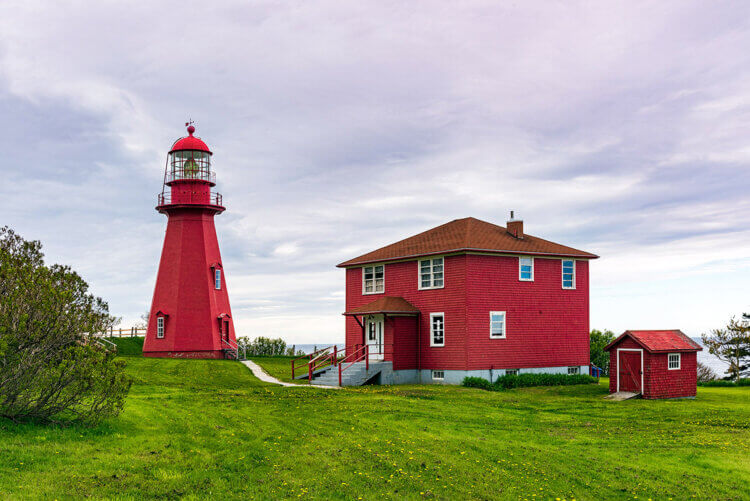
All photos © Robin and Arlene Karpan
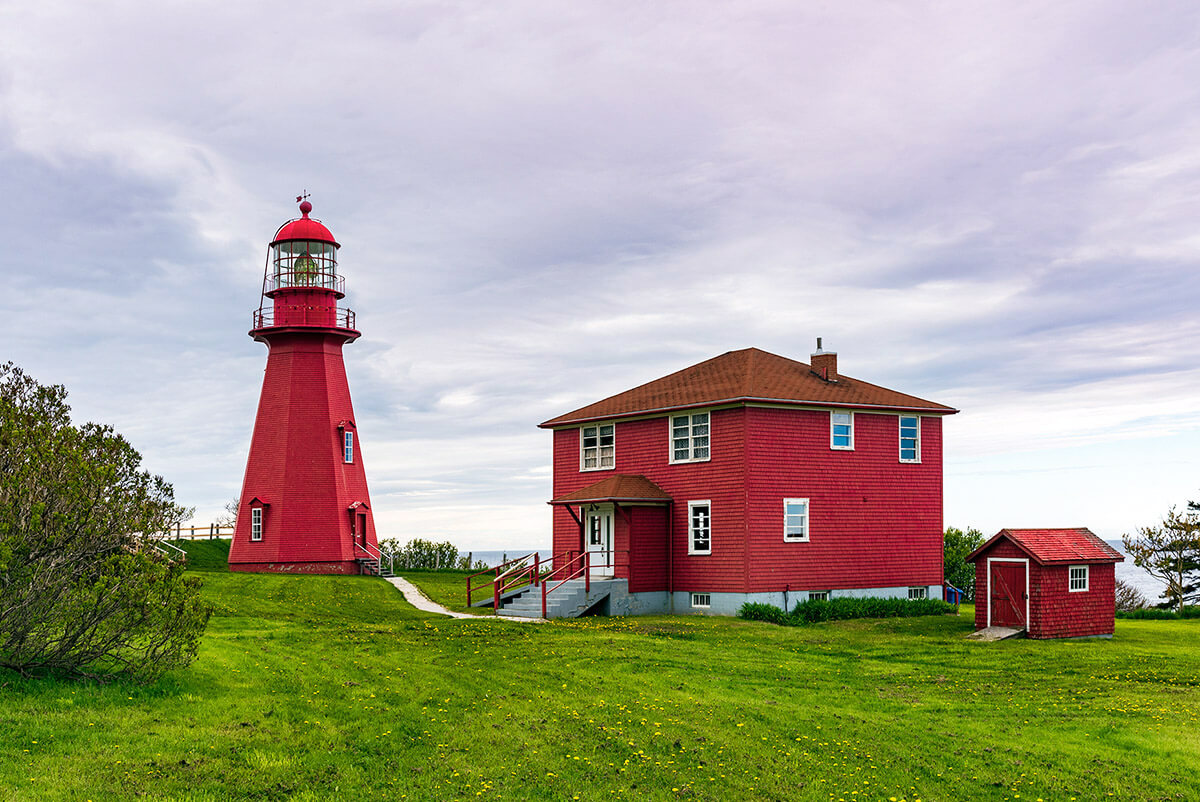
If you like lighthouses, this is one road trip not to miss. The coastline of Quebec’s Gaspé Peninsula stretches for about a thousand kilometers from just outside Quebec City to the border with New Brunswick. It’s not only the outstanding scenery that makes this route a marvelous drive, but also rich history, great parks to explore, along with birding trails and pleasant cycling paths in wildlife preserves.
But we’re going to concentrate on its role as part of Quebec’s Lighthouse Trail, where we find the tallest and second tallest lighthouse in Canada, plus a series of others in breathtaking landscapes and with intriguing stories. Here are a few of our favourites while driving along the Highway 132 coastal route.
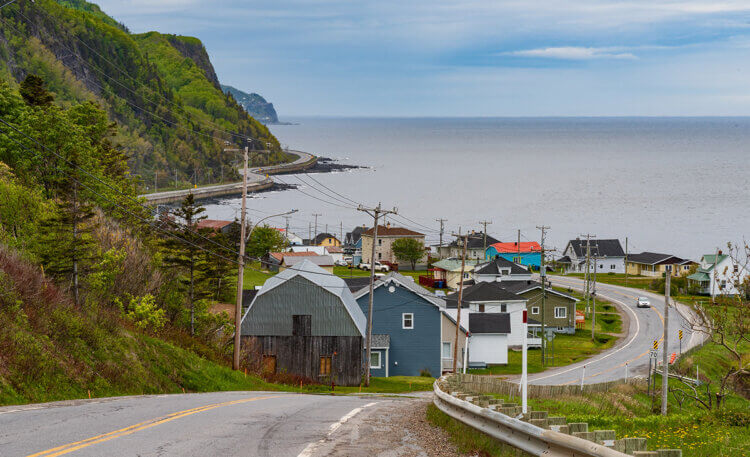
Parc de l’Ancien-Quai – St-André-de-Kamouraska
Though the route boasts some of the largest and most impressive lighthouses in the country, this stop takes us to the smallest and cutest lighthouse we’ll find anywhere. It’s located in Parc de l’Ancien-Quai in the community of St-André-de-Kamouraska beside the St. Lawrence River. Along with the lighthouse, the pleasant park has a picnic area and playground. St-André-de-Kamouraska is roughly halfway between Quebec City and Rimouski along Highway 132. Turn onto Rue du Quai while driving through town.
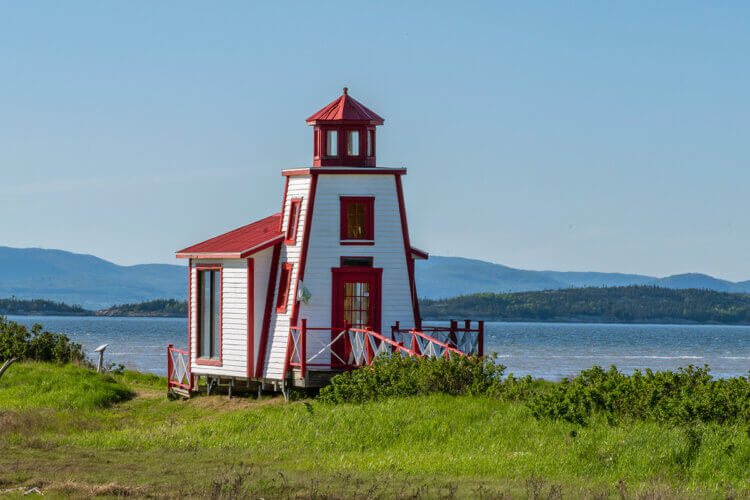
Pointe-au-Père Lighthouse – Rimouski
At 33 metres, this is the second tallest lighthouse in Canada. Built in 1909, it has an unusual flying buttress design. It is preserved as a National Historic Site. When open in summer, you can tour the lighthouse and climb to the top.
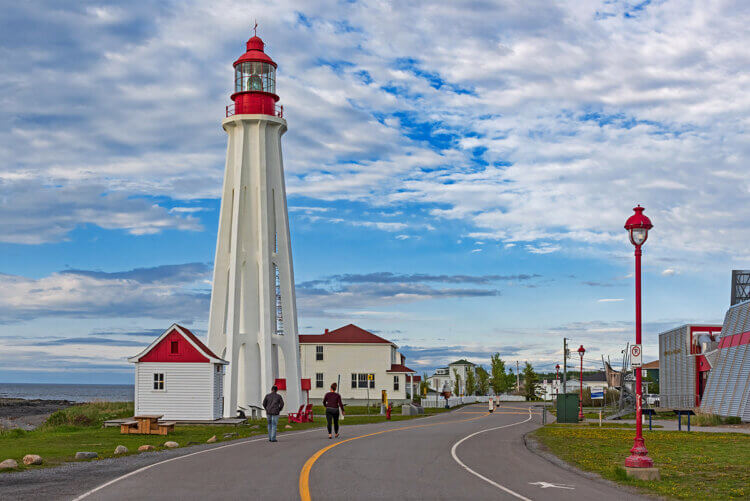
On the same grounds is the Empress of Ireland Museum which tells the story of Canada’s worst maritime disaster when the ocean liner en route from Quebec City to Liverpool sank near here in 1914 and 1,012 perished.
You can also visit the HMCS Onondaga submarine – the only submarine open to the public in Canada. It served in the Royal Canadian Navy from 1967 to 2000 and now sits on dry land where it has become a unique museum.
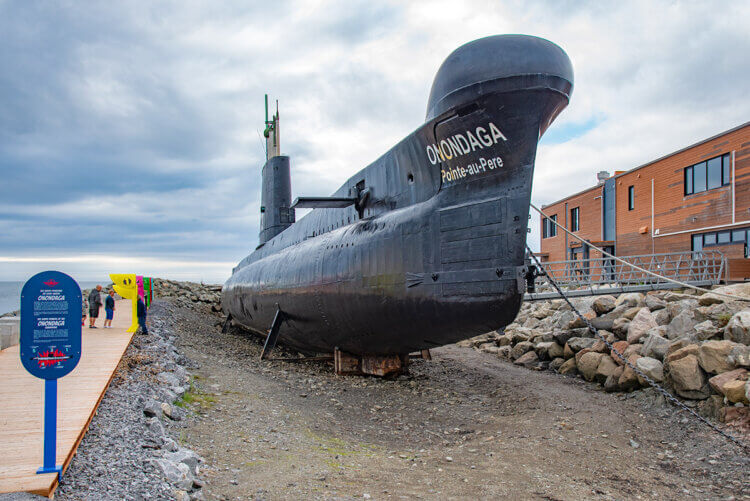
Rimouski is the largest city along the route and an ideal jumping-off point to visit several other attractions in the region. Chief among these is Parc National du Bic, a wonderful place to experience nature, just south of the city.
Matane Lighthouse
About 100 kilometres east of Rimouski, this 20-metre-high lighthouse is right beside Highway 132 as it passes through the town of Matane. The original lighthouse was built in 1873, with the current concrete cylindrical structure dating to 1906. The Société d’Histoire de Matane operates it as a museum in summer. The lighthouse keeper’s house is now the local tourist information office.
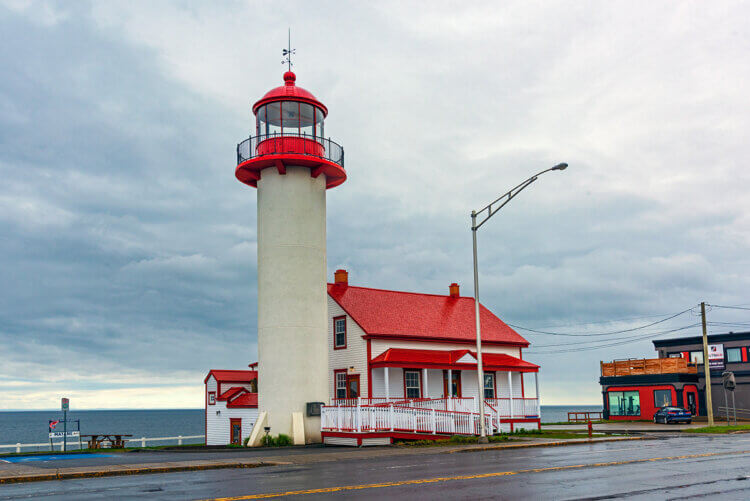
La Martre Lighthouse
You can’t miss this lighthouse – brilliant red and perched on a high hill right beside Highway 132 in the small community of La Marte. Still operating an as active lighthouse, the octagonal wooden tower was built in 1906. The huge anchor sitting on the lighthouse grounds is from the Norwegian ship Feedjoff, which sank nearby in 1890.
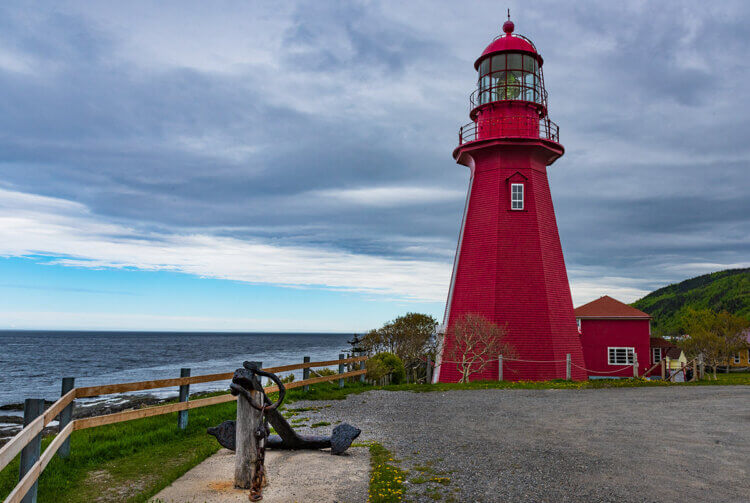
Pointe-à-la-Renommée Lighthouse
The lighthouse has one of the more dramatic settings, sitting high on a remote precipice. It is a bit off Highway 132 but the route is well-signed and well worth the detour. You approach from behind and then have a spectacular view over the lighthouse from a viewpoint complete with comfy chairs.
In 1904, this became of the site the first maritime radio station in North America, chosen by none other than wireless telegraph pioneer Guglielmo Marconi. During the summer, exhibits tell the story of Marconi and radio communications.
It’s also known as the most travelled lighthouse in the world. After being decommissioned in the 1970s, it was dismantled and transported to Quebec City where it was reassembled to serve as a tourist attraction. In 1997, it was returned to its original location and designated as an historic site.
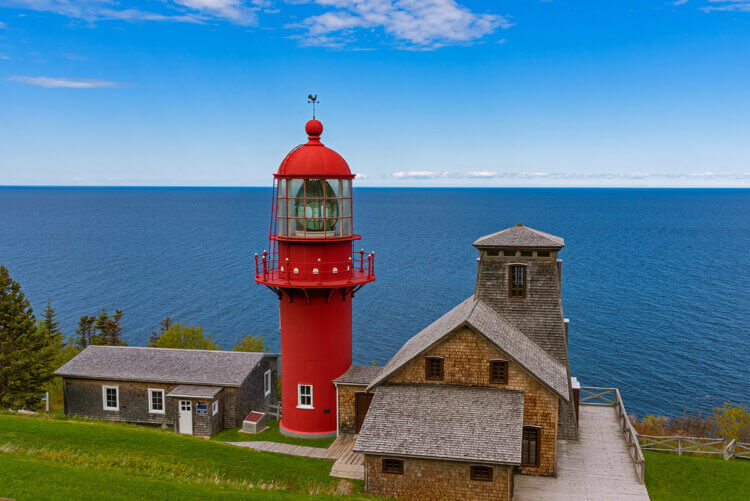
Cap-Des-Rosiers Lighthouse
Visible for miles around, this is the tallest lighthouse in Canada at 34 metres. It stands near the entrance to Forillon National Park, right along Highway 132. The original lighthouse was built between 1853 and 1858, then rebuilt in 1984 and covered in white marble. Designated an historic site, you can visit the lighthouse and climb to the top during opening times in summer.
A visit is easily combined with a stay at the park, with its magnificent scenery, wildlife, whale-watching, and outstanding hiking trails. Since the lighthouse is close to the main campgrounds in the park’s northern sector, it’s handy to come here for sunset when the lighthouse takes on a golden glow. And you can see it from the Banc trail that runs along the shore.
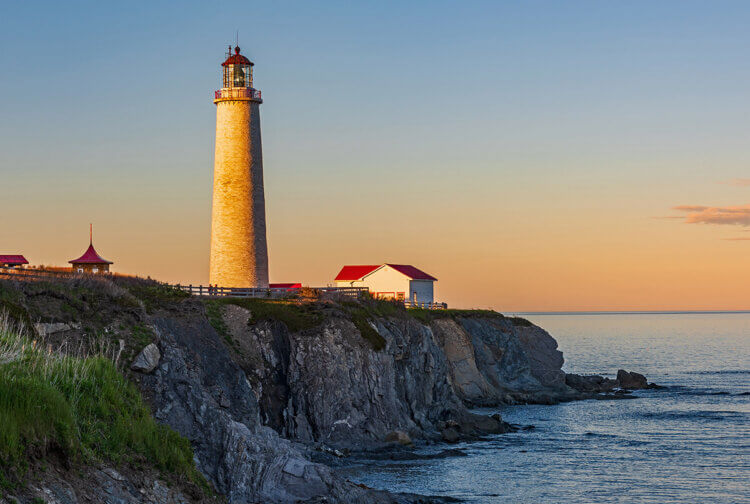
Cap-Gaspé Lighthouse, Forillon National Park
It would be hard to imagine a more breathtaking location for a lighthouse. It stands atop a 95-metre cliff at the end of the peninsula that juts out from the northeast point of the Gaspé Peninsula. Originally built in 1873, the gleaming white concrete lighthouse we see today dates to 1950. It is now solar-powered and fully automated. Since it is in a national park, we can enjoy the view while sitting in iconic Parks Canada red chairs.
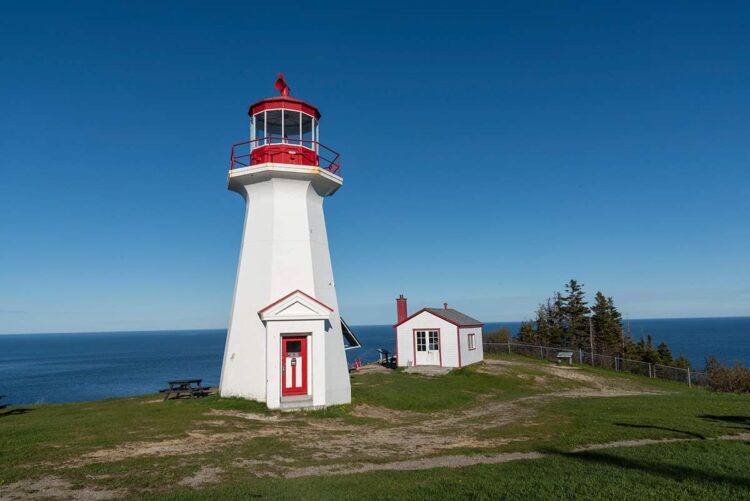
We get there by walking along the 8-kilometre round trip Les Graves Trail, which is also the northern terminus for the International Appalachian Trail, running all the way to the southern USA. A bonus is the possibility of seeing wildlife along the way. When we walked it we watched Minke whales just offshore. An even more imposing view of the lighthouse is from the water, where we see it perched high on the cliffs. This view is usually possible when taking the whale-watching boat trip from the park.
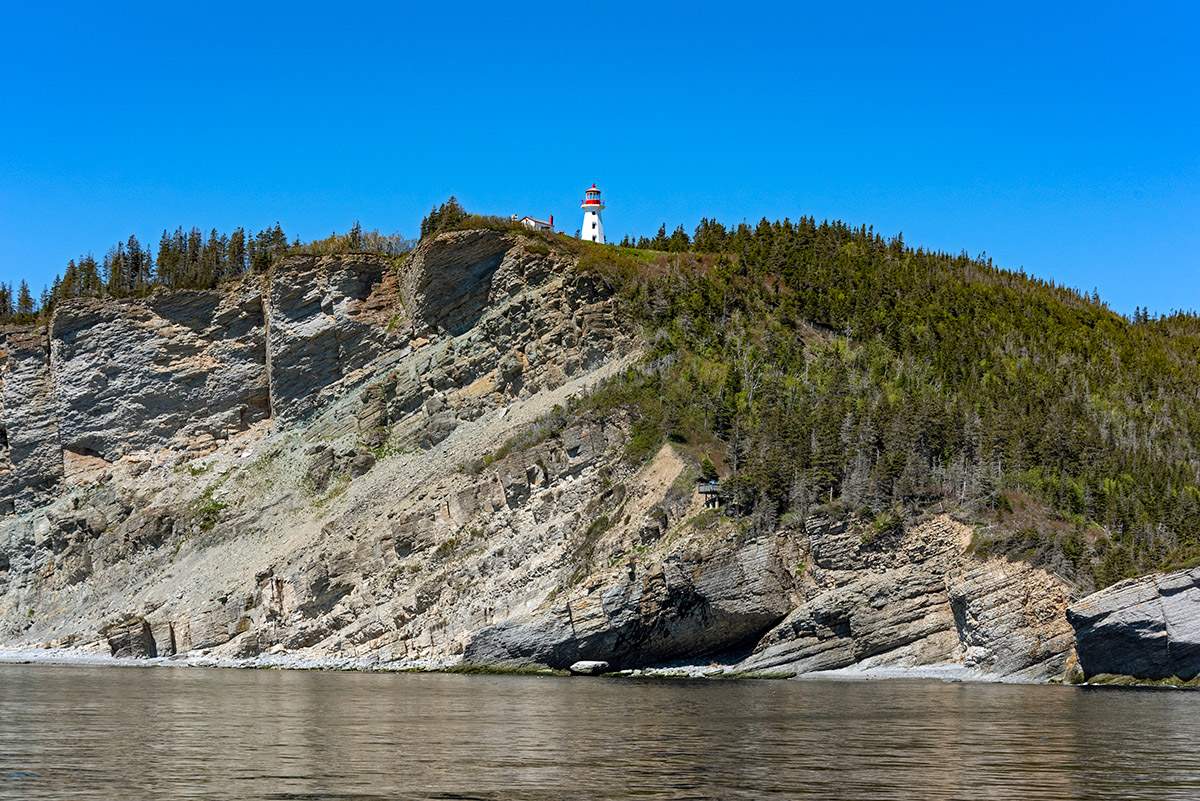
Cap d’Espoir Lighthouse
Cap d’Espoir is a promontory at the northeast entrance to Chaleur Bay, separating the Gaspé Peninsula and New Brunswick. It is also fairly close to Percé, home to the famous Percé Rock, the Gaspé Peninsula’s most popular attraction.
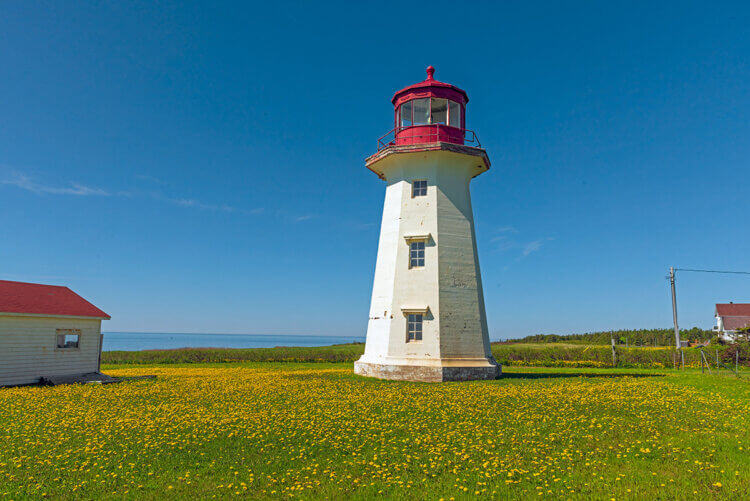
The first lighthouse here was established in 1873. The current octagonal concrete tower replaced the original wooden structure in 1939. Cap d’Espoir translates as Cape of Hope, but early English charts named it Cape Despair, a rough phonetic sounding of the French word, giving it a completely different meaning. To get there, head south of Percé along Highway 132, then turn onto Route du Phare.
Carleton Lighthouse
Deeper into Chaleur Bay, this tiny lighthouse is in the seaside community of Carleton-sur-Mer at Pointe Tragadigache. From the east side of Carleton along Highway 132, turn onto Av. Du Phare and follow it to the tip of a narrow peninsula next to a campground and a breakwater that is a popular spot for fishing.
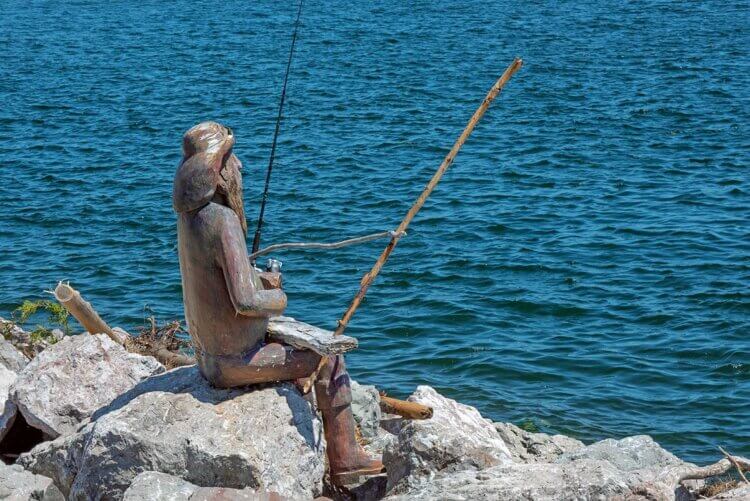
A lighthouse built in 1872 went through many incarnations over the years. In 1957 the wooden building was replaced by a skeletal structure that did the job but lacked aesthetic appeal. So in 1984, the community built a replica lighthouse similar to the one constructed in 1911.
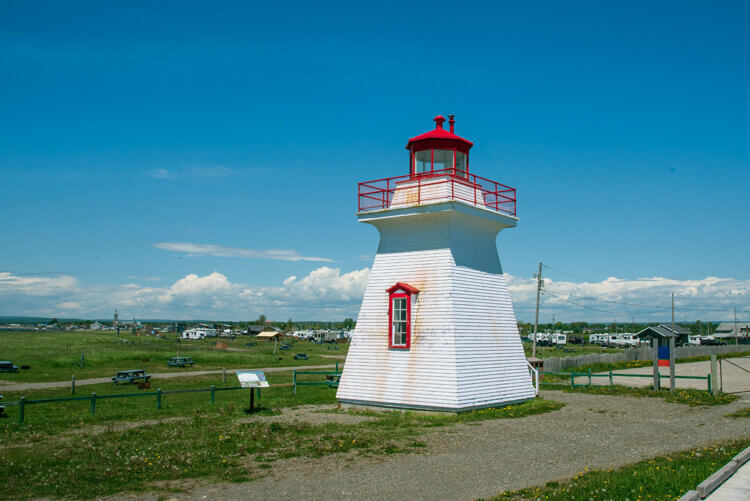
Other Photojourneys articles on the Gaspé Peninsula
-
Hiking with Whales in Quebec’s Forillon National Park
-
Wildlife Adventure of Quebec’s Bonaventure Island
-
7 Must-do Activities in Forillon National Park in Quebec
For details on other attractions in the region, visit the Quebec Maritime website, Tourism Gaspésie, and Bas St. Laurent Tourism. For more information on Forillon National Park, visit the Parks Canada website.
SUBSCRIBE to Photojourneys below
Feel free to PIN this article for later on the Lighthouse Trail
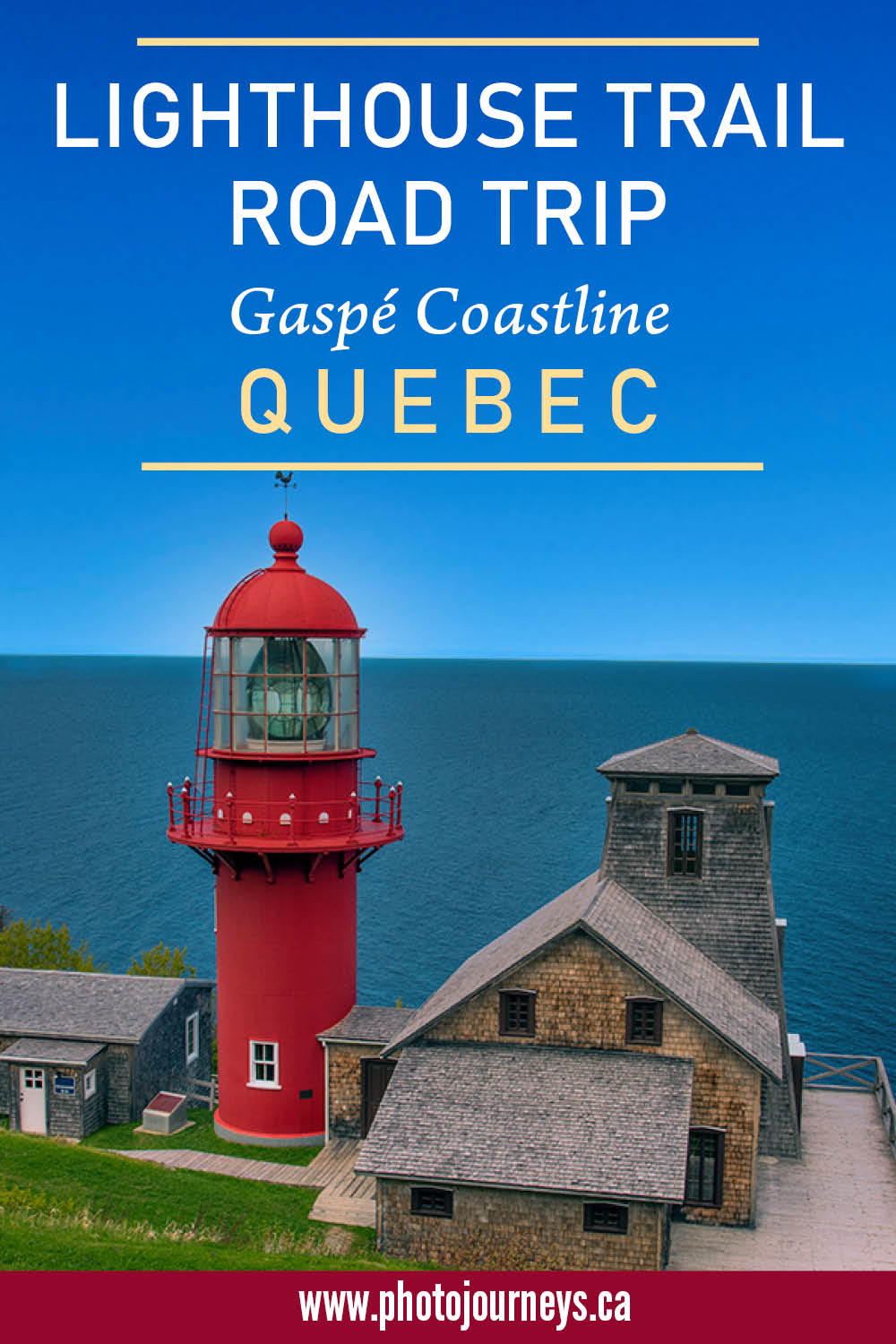


I want to do this! Thanks for the details, vivid photos and inspiration.
Laura. We’re glad you enjoyed the article. It’s a beautiful trip.
So interesting, thank you! I love this history in our great country. Would love to take this drive ( not only in my mind!)
Thanks Lauren. We are glad you enjoyed the article.